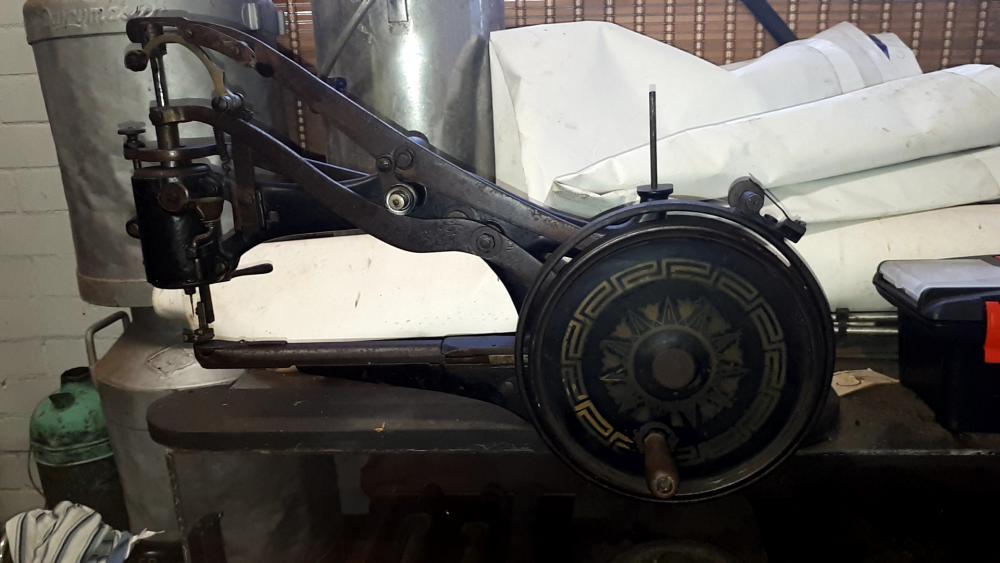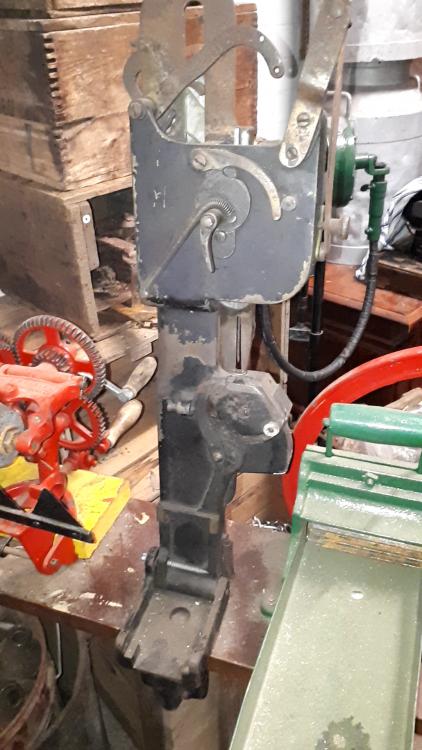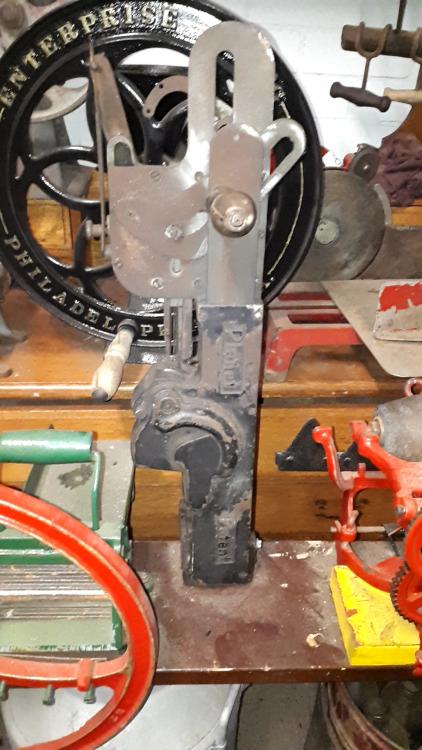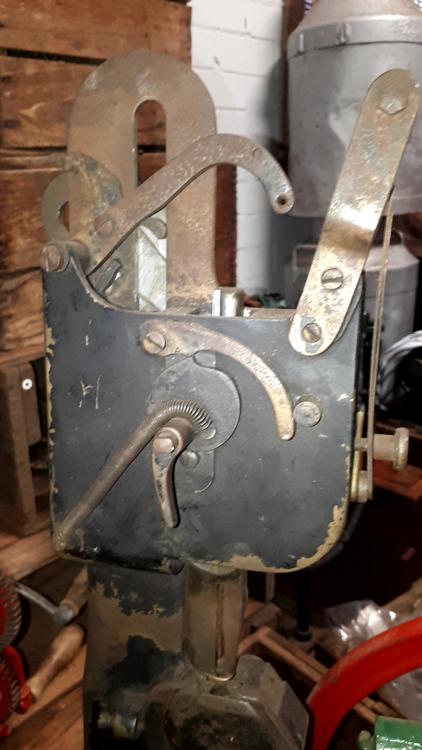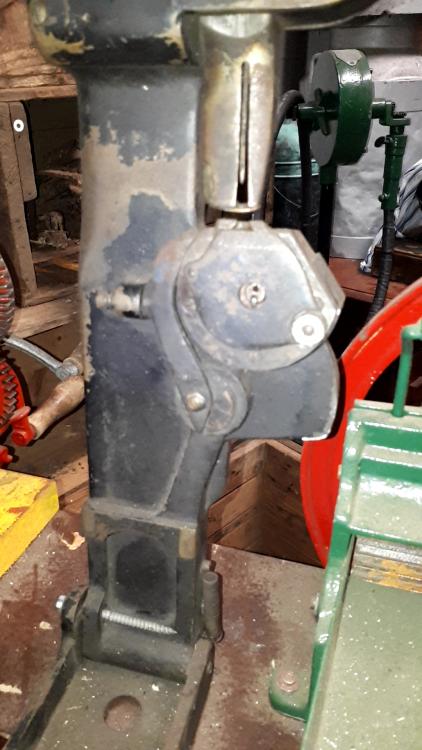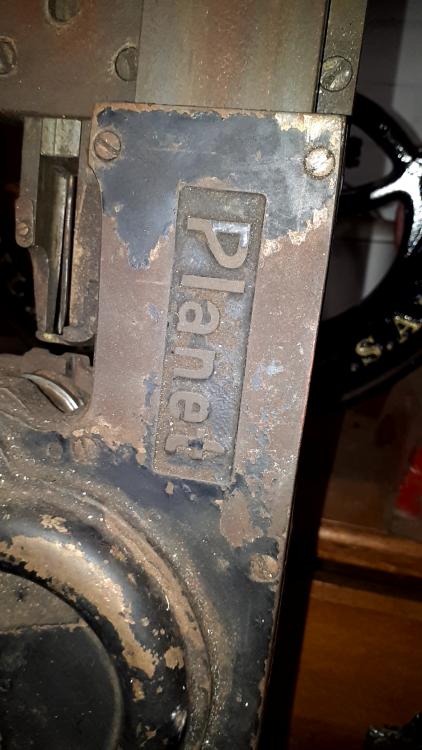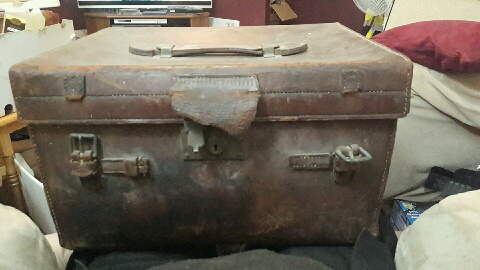-
Posts
1,422 -
Joined
-
Last visited
Content Type
Profiles
Forums
Events
Blogs
Gallery
Everything posted by Rockoboy
-
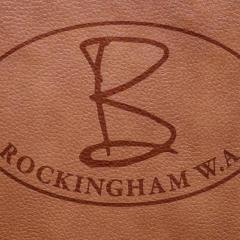
Vintage alphabet spots needed!!
Rockoboy replied to ScottySpottyBelts's topic in Leatherwork Conversation
I have never seen anything like these letters, but I like them, so I am watching and hoping they are still available. -
Careful with the sandblasting. Personally, I would prefer to maintain the patina. Maybe a good clean with a high pressure hose will do it justice. Top notch machine any which way it finishes up.
-

WIP. The first attempt to emboss the human face
Rockoboy replied to ABHandmade's topic in Figure Carving
Absolutely stunning work. The model ain't to bad either. -

Sheath. Not a case for a Pez dispenser
Rockoboy replied to Bawarrior's topic in Gun Holsters, Rifle Slings and Knife Sheathes
Excellent job, from the shape to the stamping, the edging and the dyeing. I also like the stitch pattern on the back for the belt loop. It adds a bit of interest compared to the standard 2 lines of stitching along the edges of the belt loop. -
Thank you for your information @JazzBass. My nephew is a guitar player, so there might be a strap being made in my future.
-

Help with ID for this machine thanx.
Rockoboy replied to Rockoboy's topic in Leather Sewing Machines
Thank you once again @jimi. -

Can somebody ID this machine please ... No. 2.
Rockoboy replied to Rockoboy's topic in Leather Sewing Machines
Thank you @jimi -
I also saw this machine recently, but the lighting was poor, and I could only get 1 pic of the near side. Does anybody have any details of this machine please?
-
I was lucky enough to see this old sewing machine recently, but apart from the name "Planet", there are no identifying marks, and a Google search has produced very limited information. The owner of the machine, which appears to still work correctly but has not been completely tested, believes his Gandfather brought it with him from New Zealand when he came to Australia in early 1900's. Any information would be greatfully received.
-

Re-dying finished and tooled leather products
Rockoboy replied to Bobadouba's topic in How Do I Do That?
Meths or methylated spirits is also known as denatured alcohol. -

I saw 'How to measure for a padfolio' somewhere
Rockoboy replied to Rockoboy's topic in How Do I Do That?
Thank you everybody who contributed, @zuludog, @Stetson912, @Sheilajeanne, and @JLSleather comes through again, with exactly what I was looking for. Excellent work by @particle on his offerings. -

I saw 'How to measure for a padfolio' somewhere
Rockoboy replied to Rockoboy's topic in How Do I Do That?
Thanx for your observations @Stetson912. Unfortunately those are not the posts I have seen. It was a line drawing of how to figure out how much to add to the front and back cover, considering the thickness of the book. -
There are a lot of very knowledgeable and giving folk on this site, provided you ask questions and absorb the information in a reasonable and polite manner. Start out with a batch of keytags, drink coasters or similar small items that will not take a huge amount of leather. If you make a blunder, move on to the next one, but save the botched one for testing dye or different stamping techniques. Practice what you have read and as you get more proficient, you will see the improvements in your work. Most important of all ... have fun and enjoy yourself.
-
Hi there, I saw somewhere hereabouts, a pattern for measuring a book for a padfolio, but I have goggled and searched to no avail. Can somebody please point me in the right direction?
-
Hmmm thanx @garypl and @fredk. I appreciate your information, but I fear I am still looking for a definitive answer. Maybe I am over-setting (also known as smashing) my rivets.
-
How do you avoid flattening the concho? I have some that have a bit of a dome effect, and laying them on a hard flat surface, (as I would set a rivet), will flatten and/or destroy the concho. If the surface is softer, I don't think the cap will set properly as a rivet does..
-
I use a 4 drawer filing cabinet, and so far, I have only filled the top drawer with dye, solvents, oils etc. The other drawers have letter stamps, excess buckles, press studs and rivets and a few tools that are ... 'surplus to requirements'.
-
Pics of the tools would help, As much as I like Kelly Tool Co tools ( I have a few dozen), I have no idea what you have.
-

Is there a font for Ivan Alphabet stamp set 8132-00
Rockoboy replied to RockyAussie's topic in How Do I Do That?
I scrolled through a lot of different fonts, maybe around a thousand or more to identify this font. The closest I was able to find was called Classic Western. -
Bend some of your pegboard hooks around, so they have a loop on the end, or you can buy pegboard hooks with a loop instead of a straight end.
-
I like your luggage tags. They are a good thing to make for practice, because they don't use much leather. Change the initials for all of your family and friends, and you will be a master in no time.
-

Greetings from the North Island of New Zealand!
Rockoboy replied to Kiwistitcher's topic in Member Gallery
@Kiwistitcher You should also check out Birdsall Leather in New South Wales. They have a heap of stamps, some discontinued and some new designs, from $3.00 per stamp if you buy 10 at a time. -
@RockyAussie is also an ideas man. That's why I call him the ideas man. He has lots of ideas. "Adapted from Dale Kerrigan 'The Castle' a classic Australian Movie"



